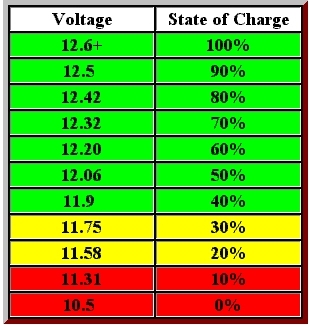Hoping someone can help with my Victron MPPT+Shunt+Protect and Yuasa lead acid leisure battery setup. The batteries started failing at under one year old, and now at one year they are pretty much shot. Apart from two short breaks the van has been UK touring for six months. The stated cycle life on these Yuasa batts is 200 but for shallow discharge I expect far more. They should have lasted longer than this.
System components:
Victron BlueSolar MPPT 100/30
Victron BMV-700 battery monitor & shunt
Victron Battery Protect
Victron Smart dongle x 2
Sunshine Solar 100W x 3 panels series wired
Merlin VSR 140A (13.3V connect/12.8V disconnect)
Yuasa L36-EFB 100Ah leisure x 2
The SOC on my BMV-700 very rarely goes below the 80% region. This should take the life of these batteries into several years. I know of van lifers on YouTube with lead acid batteries several years old. The late Allan Evans at A & N Caravan Services rated the Yuasa L36-EFB higher than many AGM's. But now, in the morning after an overnight park up, the Victron app typically shows above 80% SOC/30Ah used and about 11.5 volts. Not enough to run the fridge - when the compressor starts the Victron app shows the amps building up, volts dropping to 11 and then the fridge shuts off. So what is going wrong? I need to find out before installing new batteries.
I have the usual LED lighting, water pump, phone and laptop charging. Significant consumers are the compressor fridge and a CPAP unit. After an overnight stop and on starting the van the 180amp alternator will kick out 60amps, reducing and then gradually declining during driving until the leisure bank is charged. Without summer solar, if we're not driving early in the day the engine has to be run for half an hour to get the voltage up and keep the fridge going. This is daft with a 200Ah battery bank and 50% floor on the Victron Battery Protect. And with just 30Ah deficit showing on the app, the voltage should be higher.
Either the Yuasa L36-EFB batteries are not fit for purpose, or the Victron units are not working correctly, or they have been set up incorrectly. The MPPT 100/30 is on the default setting position 2. The BMV-700 battery settings are either default or set by my installer, a member of the approved workshop scheme but not a Victron agent. I've moved away from the installer location so cannot ask them, and in any case don't think they were Victron supremos.
One thing I've noticed is that the SOC percentage doesn't exactly match up with the consumed amp hours, e.g. the phone app shows 84% SOC and consumed Ah of -34.9 when my maths says it should be -32Ah. A small difference maybe, but if the Victron system is not accurate there could be issues affecting the batteries.
I've switched all my consumers in and out to see if any were not registering on the shunt. What else could be causing this problem?
System components:
Victron BlueSolar MPPT 100/30
Victron BMV-700 battery monitor & shunt
Victron Battery Protect
Victron Smart dongle x 2
Sunshine Solar 100W x 3 panels series wired
Merlin VSR 140A (13.3V connect/12.8V disconnect)
Yuasa L36-EFB 100Ah leisure x 2
The SOC on my BMV-700 very rarely goes below the 80% region. This should take the life of these batteries into several years. I know of van lifers on YouTube with lead acid batteries several years old. The late Allan Evans at A & N Caravan Services rated the Yuasa L36-EFB higher than many AGM's. But now, in the morning after an overnight park up, the Victron app typically shows above 80% SOC/30Ah used and about 11.5 volts. Not enough to run the fridge - when the compressor starts the Victron app shows the amps building up, volts dropping to 11 and then the fridge shuts off. So what is going wrong? I need to find out before installing new batteries.
I have the usual LED lighting, water pump, phone and laptop charging. Significant consumers are the compressor fridge and a CPAP unit. After an overnight stop and on starting the van the 180amp alternator will kick out 60amps, reducing and then gradually declining during driving until the leisure bank is charged. Without summer solar, if we're not driving early in the day the engine has to be run for half an hour to get the voltage up and keep the fridge going. This is daft with a 200Ah battery bank and 50% floor on the Victron Battery Protect. And with just 30Ah deficit showing on the app, the voltage should be higher.
Either the Yuasa L36-EFB batteries are not fit for purpose, or the Victron units are not working correctly, or they have been set up incorrectly. The MPPT 100/30 is on the default setting position 2. The BMV-700 battery settings are either default or set by my installer, a member of the approved workshop scheme but not a Victron agent. I've moved away from the installer location so cannot ask them, and in any case don't think they were Victron supremos.
One thing I've noticed is that the SOC percentage doesn't exactly match up with the consumed amp hours, e.g. the phone app shows 84% SOC and consumed Ah of -34.9 when my maths says it should be -32Ah. A small difference maybe, but if the Victron system is not accurate there could be issues affecting the batteries.
I've switched all my consumers in and out to see if any were not registering on the shunt. What else could be causing this problem?



